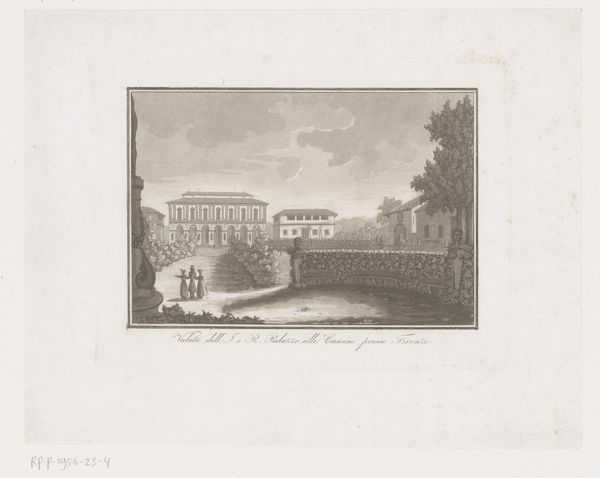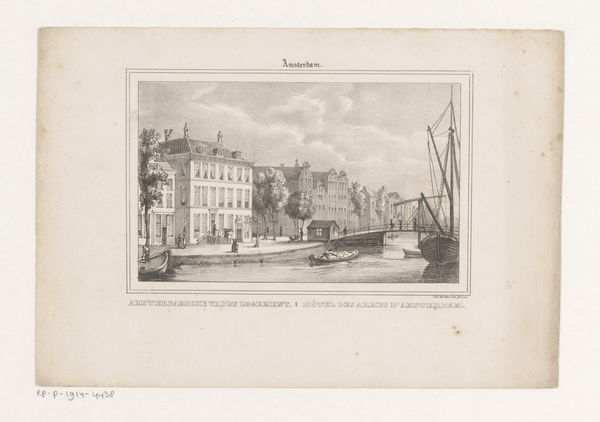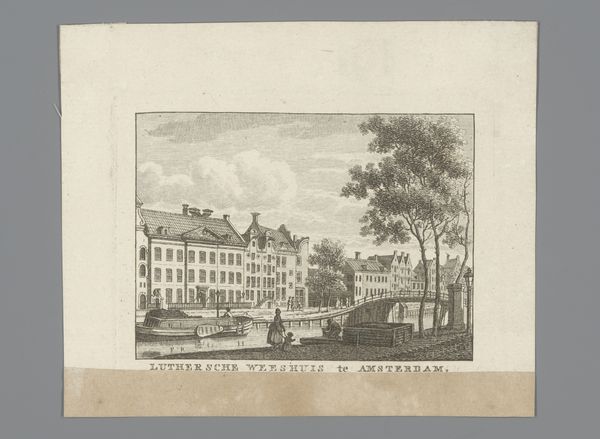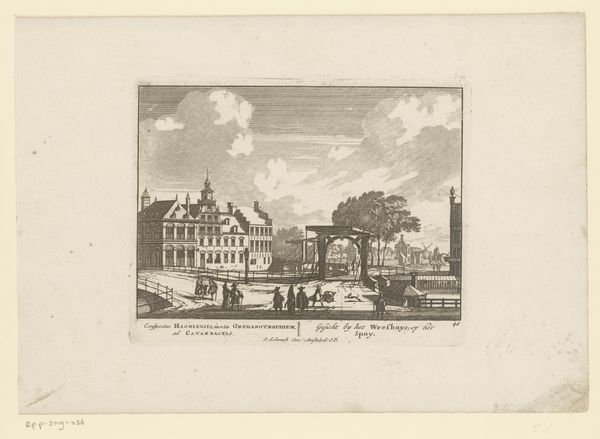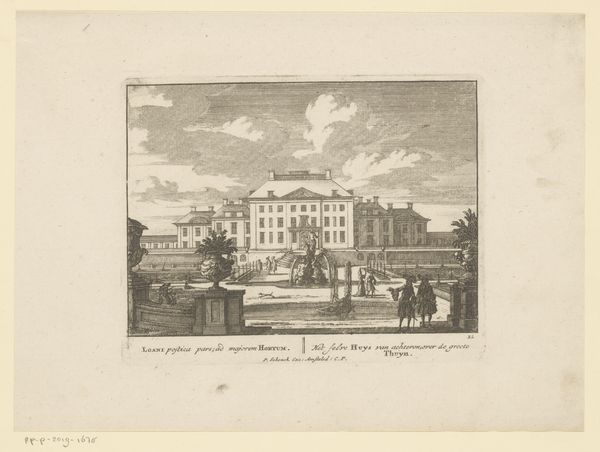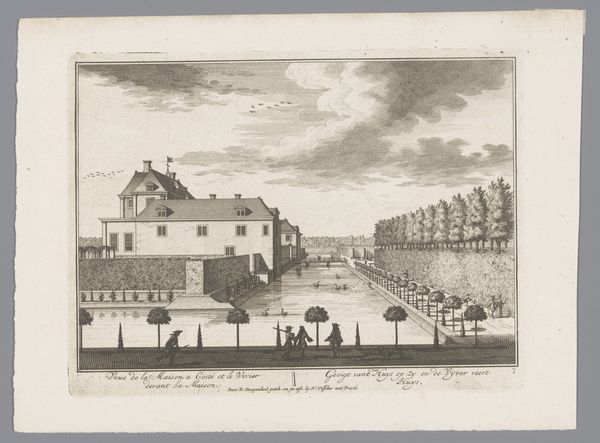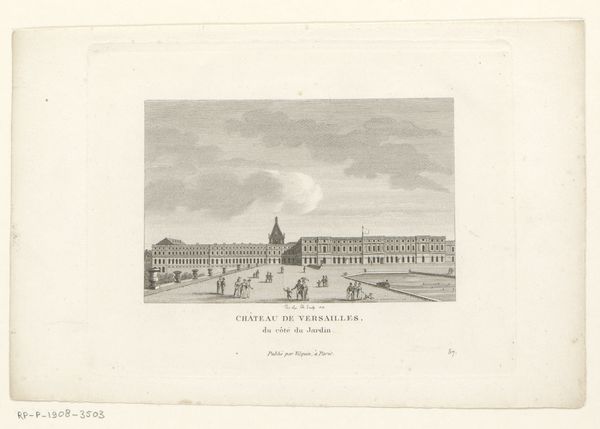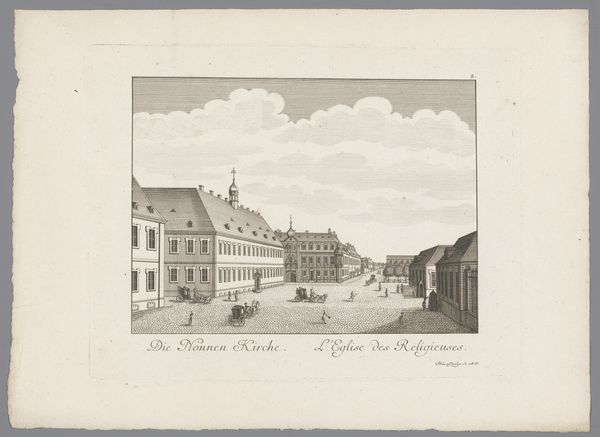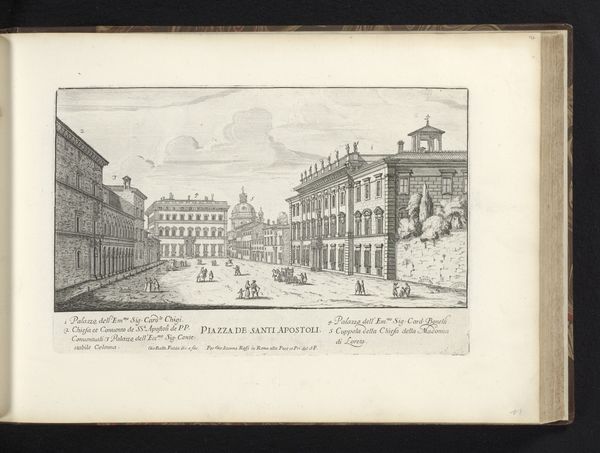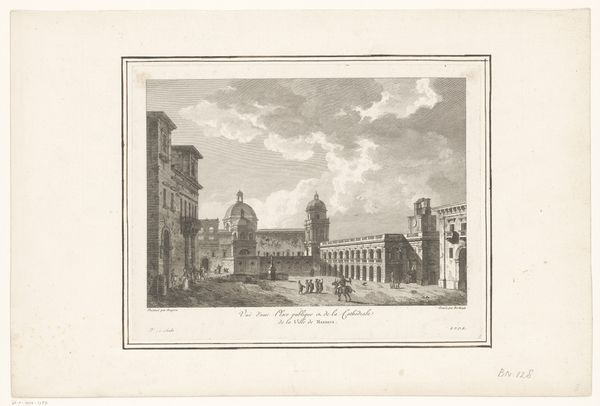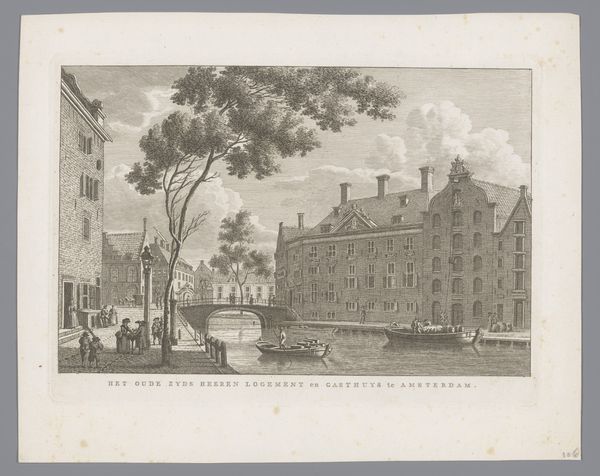
print, engraving
#
neoclacissism
# print
#
landscape
#
cityscape
#
watercolour illustration
#
engraving
Dimensions: height 236 mm, width 305 mm
Copyright: Rijks Museum: Open Domain
Editor: Here we have Jean Baptiste Ambroise Marcellin Jobard’s "View of Castle Limbricht," made sometime between 1820 and 1850. It's a print, an engraving to be precise, depicting a stately building surrounded by water. I'm immediately struck by the scene's almost detached calmness. What do you see in this piece, particularly when thinking about imagery and symbols? Curator: What stands out to me is how Jobard uses this calm facade to speak volumes. Notice the castle’s central position, a fortress but depicted almost serenely, like a memory. Water is a potent symbol—of reflection, purification, but also separation. The castle, surrounded by water, evokes isolation, security, but perhaps also being cut off from the mainland, from the present, which amplifies an almost dream-like memory or timelessness. What does the little human figure at the bottom suggest to you? Editor: He seems rather small and ordinary compared to the castle itself, emphasizing the imposing nature of the architecture. Could this imply the changing roles of castles during that period, perhaps transforming from defensive structures to symbols of aristocracy? Curator: Exactly. He's on the outside of this image, a reminder that the memory and icon of the castle are changing roles. Also consider the era – the 19th century. The romanticized view of the past. Jobard presents not a living, breathing castle bustling with activity, but an echo frozen in time, symbolizing historical weight and continuity, which reflects our nostalgia of past era in modern life. The building stands isolated in the middle of its very own moat. What do you think about the building's style in that context? Editor: That makes me think of Neoclassicism and its tendency to revisit older forms. That it is based on rational, almost scientific and exact imagery suggests something about that castle and what the image wants us to think of it. Thanks for pointing out the cultural memory in the symbol! Curator: Indeed, by understanding visual symbols, we recognize the castle not just as a building, but as a potent carrier of history, power, and perhaps even longing, all communicated silently through line and form. It makes you consider what imagery we build and why.
Comments
No comments
Be the first to comment and join the conversation on the ultimate creative platform.
